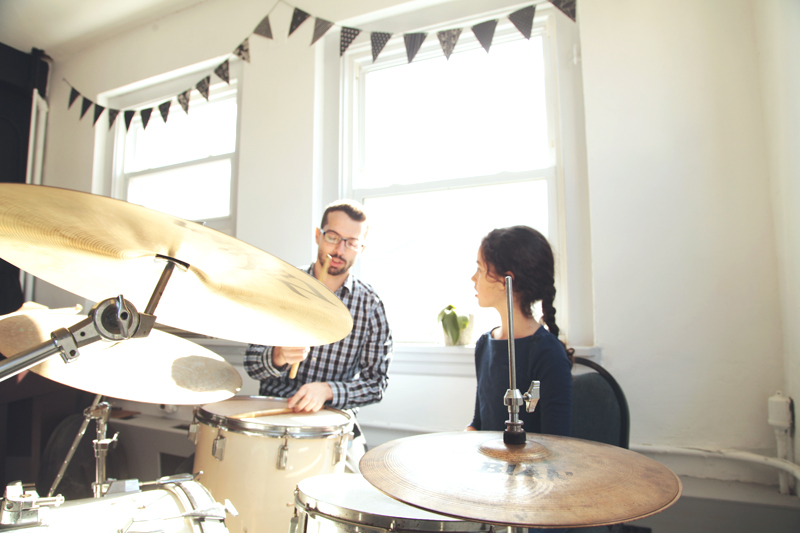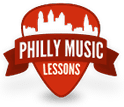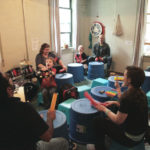
Beginner Jazz Coordination: A Game Plan
My introduction to jazz coordination was sort of a trial by fire thing. I was a young student at the Armed Forces School of Music, fresh out of Basic Training, and as green as my uniform concerning anything related to jazz drumming. At my first lesson, the teacher explained how to properly execute a jazz swing beat and the dynamics of each component of that. Not too difficult. Probably the toughest part of that was getting control of my heavy right foot, which up to that point was accustomed to slamming the bass drum on every stroke of whatever Rush song I had learned that week. In jazz, the bass drum is to be played lightly while the main focus is on the ride cymbal and hi-hat. This is to avoid over-powering the string bass player. Here is the pattern he showed me:
Keep in mind the eighth notes should swing, so it really sounds like this:
Once this was established, he then instructed me to open up the book Progressive Steps to Syncopation by Ted Reed to page 37 (I believe it’s actually page 38 in the more recent editions) and read down the page with my left hand. I think I respectfully laughed. The first four measures of that page looked like this:
He advised me to simply get pattern 1a together, let it go on “auto-pilot,” and keep my focus on reading the snare drum line with my left hand. Oh yeah… and don’t change the ride pattern. After the lesson I immediately hit a practice room and realized very quickly my teacher’s advice wasn’t going to work for me. I needed to devise some sort of game plan to get this assignment together before my next lesson, which was only one week away. Yikes!
Since I knew I was dealing only with quarter notes and eighth notes (down beats and up beats), I needed to figure out how the rhythm I was playing in my left hand would relate to the ride cymbal pattern. My method began with only playing downbeats or upbeats with the left hand while playing the jazz ride pattern in the right hand. I also left the feet out of the equation until I had the hands worked out. In examples 3 and 4 you can see where the hands coincide and where they don’t.
The next step is to play short two-note combinations of downbeats and upbeats on the snare drum. Repeat each measure until you have a firm handle on it before moving on to the next.
Then, try three and four note combinations.
Once you have accomplished this, the next step is to add the bass drum and hi-hat into the mix. After that you should have the necessary facility to successfully work though the exercise on page 38 in the Syncopation book. Here is what the first four measures look like written out.
One thing you will probably notice after working though the first three or four lines is that rhythmic figures will start to reoccur since there are only so many of them. At that point, it just becomes a matter of making the transition from one figure to the next. This will likely feel very robotic and unmusical at first. But in time it will get easier and eventually start to sound like music. Another thing to keep in mind is that this process, while it may seem very time consuming at first, will actually help you get this type of coordination together faster than if you were to attempt to read down the page using the auto-pilot method. Just take it slow and be patient. And above all, have fun.
Art Thompson
My name is Art Thompson. I began studying drums at age 10. Academically trained through my school band program, and also born into a musical family, I was exposed to a variety of different kinds of music growing up. After high school I had the honor of serving as a member of the U.S. Army Band. I have had an educational article published in Modern Drummer magazine's Rock and Jazz Clinic column as well as having been featured in Modern Drummer's On The Move column and also New Blood in DRUM! magazine. In addition, I have self- published my own method book, The Beginner's Handbook for Drum Set. I base my teaching style on the needs and interests of each individual student. While I feel there are certain foundational things every drummer needs to know (rudiments, reading skills, technique, etc.) I try to find ways to apply those things in applicable ways to the material my students want to learn. - Read More About Art


